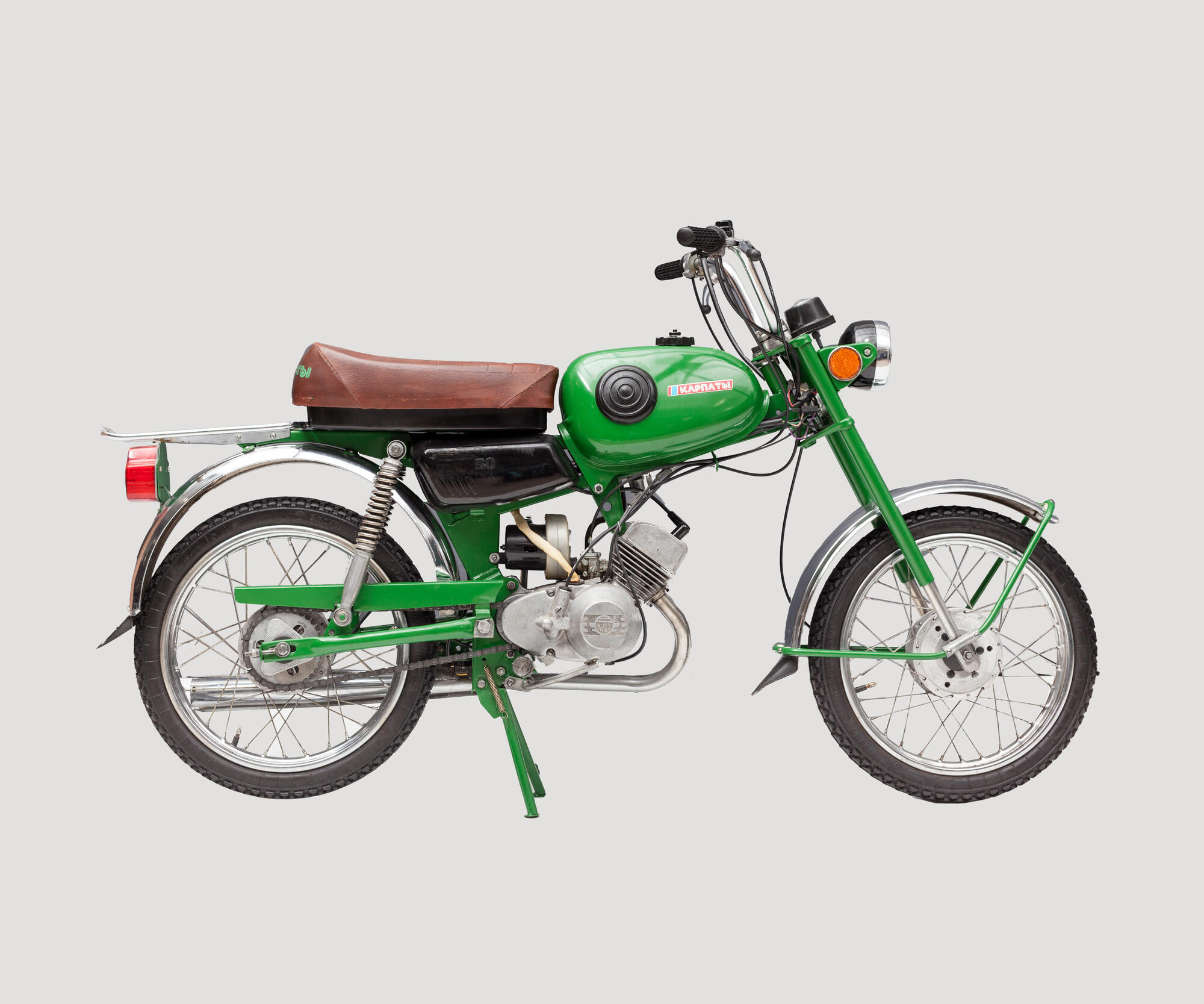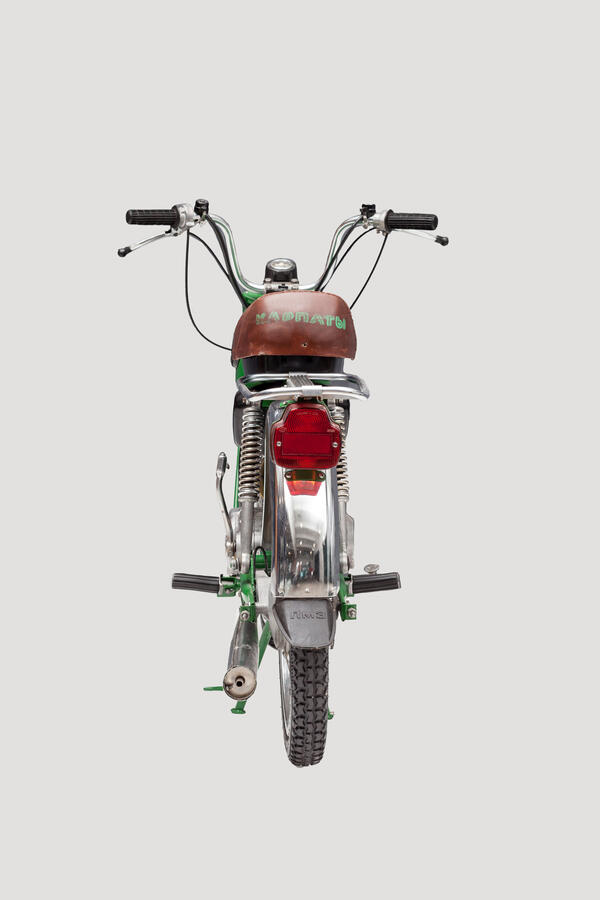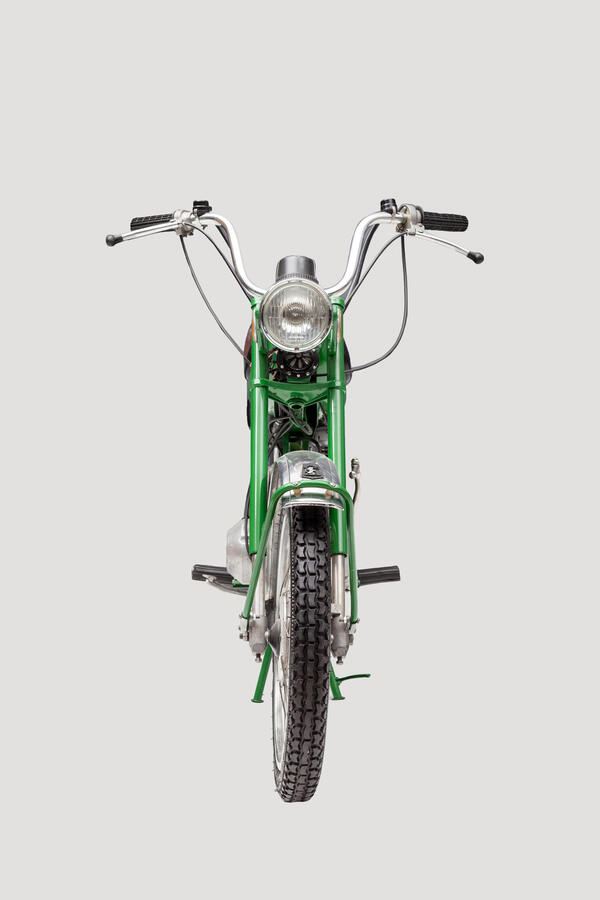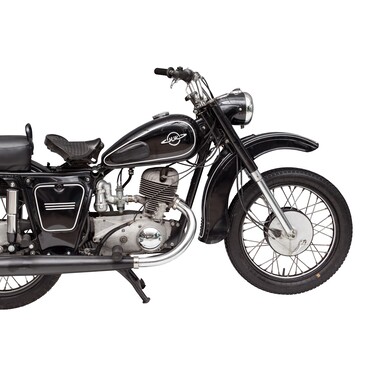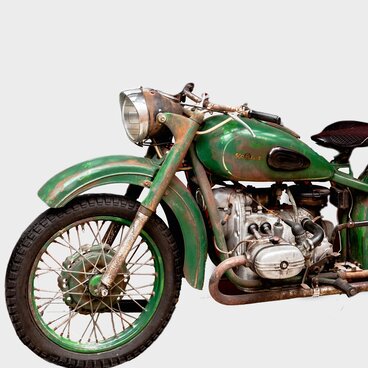In the spring of 1981, the Lviv Motor Factory produced the first Karpaty LMZ-2.160 mokicks. Five years later, the factory presented an updated model known as the Karpaty-2 LMZ-2.161. The mokick was equipped with a tube frame, a telescopic front fork with shock absorber springs, a pendulum rear suspension, and interchangeable wheels.
Both versions of the Karpaty mokicks were developed in consultation with representatives of the Leningrad Branch of VNIITE (the All-Union Scientific Research Institute of Industrial Design). The mopeds were equipped with a two-stroke single-cylinder engine S-58 that had a capacity of 50 cc and a power of 2 hp. There were also more advanced S-62 engines with a contactless ignition system produced by the Šiauliai Factory, as well as the V-50 engines with hand-operated gear changes, and the V-501 with foot-operated gear changes.
The mokicks could reach a 40 km/h speed, and the Karpaty-2 was 1.5 kilograms lighter than its predecessor. Apart from several components, the Karpaty was almost identical to the Delta mokick of the motor factory in Riga. There were also deluxe and sports versions. The deluxe Karpaty model had additional turning signal lights and an improved luggage rack.
The appearance of the sports version was significantly different from the standard model. The exhaust pipe was pointed up and had a protective cover. The handlebar had a strengthening crossbar. The handle for carrying the moped was added close to the rear section. The front fender of the Karpaty-2 Sport was raised similar to that of a motocross bike.
The designers increased the service life of the new model: the warranty mileage of the Karpaty mokick was 8,000 km, with 6,000 km for the Verkhovyna-7 moped. The factory also guaranteed a mileage of 18,000 km before requiring the first overhaul.
The mokicks of the Lviv Motor Factory could travel many thousand kilometers across the steppe and off-road conditions, which made them popular among Soviet motorcycle enthusiasts. The factory offered the Karpaty-2 mopeds in such colors as cherry, dark red, terracotta, yellow, green, light blue, and black.
Both versions of the Karpaty mokicks were developed in consultation with representatives of the Leningrad Branch of VNIITE (the All-Union Scientific Research Institute of Industrial Design). The mopeds were equipped with a two-stroke single-cylinder engine S-58 that had a capacity of 50 cc and a power of 2 hp. There were also more advanced S-62 engines with a contactless ignition system produced by the Šiauliai Factory, as well as the V-50 engines with hand-operated gear changes, and the V-501 with foot-operated gear changes.
The mokicks could reach a 40 km/h speed, and the Karpaty-2 was 1.5 kilograms lighter than its predecessor. Apart from several components, the Karpaty was almost identical to the Delta mokick of the motor factory in Riga. There were also deluxe and sports versions. The deluxe Karpaty model had additional turning signal lights and an improved luggage rack.
The appearance of the sports version was significantly different from the standard model. The exhaust pipe was pointed up and had a protective cover. The handlebar had a strengthening crossbar. The handle for carrying the moped was added close to the rear section. The front fender of the Karpaty-2 Sport was raised similar to that of a motocross bike.
The designers increased the service life of the new model: the warranty mileage of the Karpaty mokick was 8,000 km, with 6,000 km for the Verkhovyna-7 moped. The factory also guaranteed a mileage of 18,000 km before requiring the first overhaul.
The mokicks of the Lviv Motor Factory could travel many thousand kilometers across the steppe and off-road conditions, which made them popular among Soviet motorcycle enthusiasts. The factory offered the Karpaty-2 mopeds in such colors as cherry, dark red, terracotta, yellow, green, light blue, and black.
